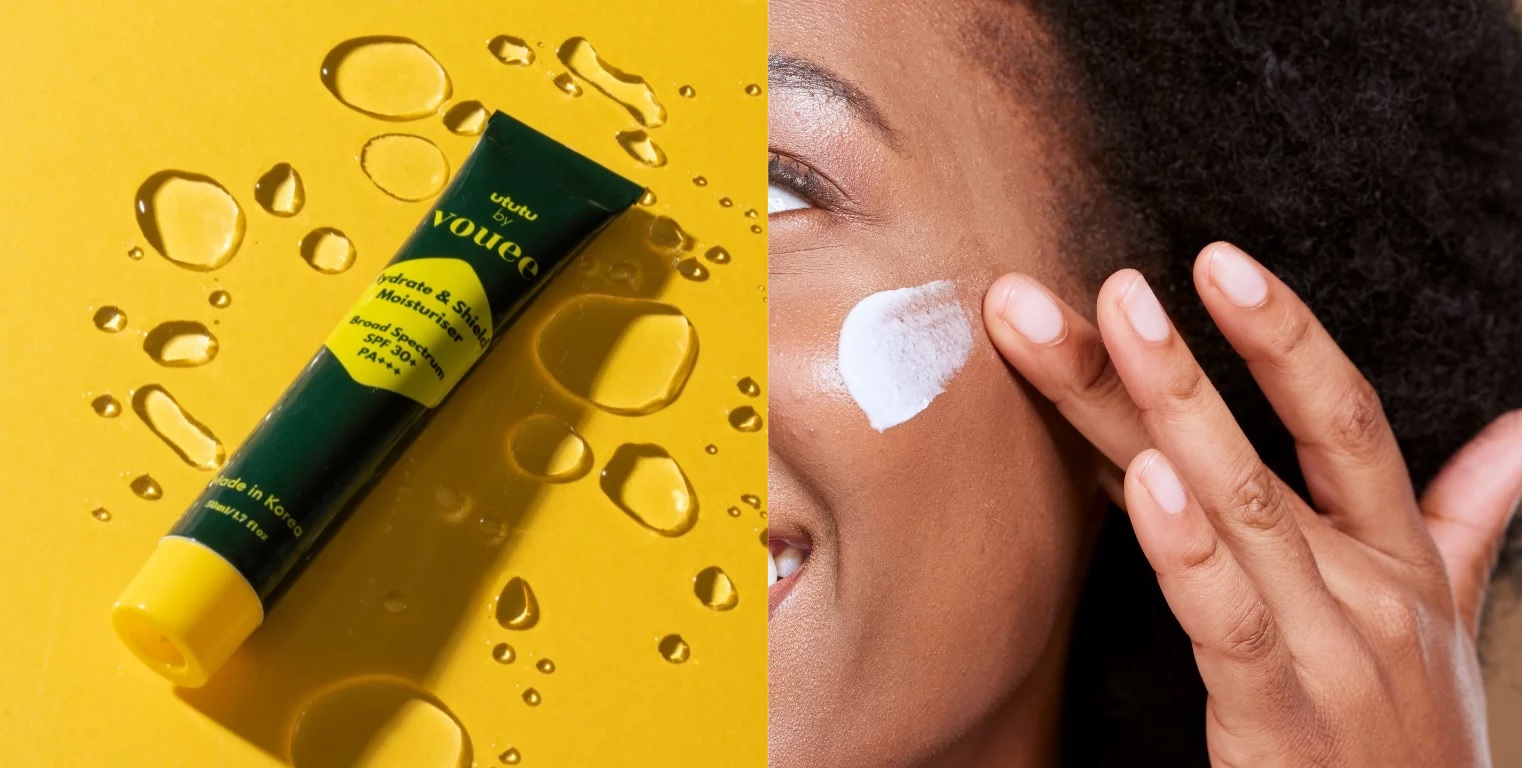What is Melanin?

Introduction
Often misunderstood, melanin is not merely the pigment responsible for the diverse array of skin tones we witness in human populations. In reality, it plays multiple roles in our physiology, significantly impacting our well-being.
Key Takeaways
| Key Points | Details |
| Types of Melanin | Three primary types: eumelanin, pheomelanin, and neuromelanin. Eumelanin offers the most effective UV protection. |
| Understanding UV Terminology | UVA, UVB, UVC have varying wavelengths and impacts on the skin. Broad Spectrum means protection against both UVA and UVB. |
| Role of Melanin in Ethnic Skin Types | Higher melanin levels offer some natural UV protection, but melanin-rich skin is also prone to hyperpigmentation and scarring. |
| Optimizing Sun Protection | A multi-pronged approach is essential for melanin-rich skin, including the use of broad-spectrum sunscreens like Ututu Moisturizer with SPF for Dark Skin Tones. |
Importance of Melanin
Melanin’s importance impacts more than your shade of makeup. It serves as a natural barrier against harmful ultraviolet radiation from the sun, helping to prevent skin cancer and premature aging. Several studies have shown individuals with higher concentrations of cutaneous melanin have a lower risk of skin cancer.
Diversity in skin colour across different geographical regions and ethnicities can be attributed to varying melanin levels. Melanin is essential in modulating the effects of ultraviolet radiation on DNA repair mechanisms. According to research, populations residing closer to the equator, where UV radiation is abundant, naturally have higher melanin content. This suggests an evolutionary advantage, emphasizing melanin’s crucial protective role.
The Science Behind Melanin
Melanin is a complex biopolymer, synthesized within specialized cells called melanocytes found in the basal layer of the epidermis. The process of its formation is known as melanogenesis, a biochemical pathway regulated by the enzyme tyrosinase. This enzyme is the catalyst for the first step of melanin production, converting the amino acid tyrosine into dopaquinone.
The final melanin product varies in colour and function, depending on genetic factors.
Types of Melanin
There are primarily three types of melanin: eumelanin, pheomelanin, and neuromelanin, each with its distinct role and distribution. Eumelanin is the most common form, responsible for black and brown pigmentation in the skin, hair, and eyes. According to a study in the Archives of Biochemistry and Biophysics, eumelanin offers the most effective protection against UV radiation, making it highly relevant for melanin-rich skin tones.
Pheomelanin, on the other hand, imparts reddish and yellow hues. While it still offers some degree of UV protection, it’s not as effective as eumelanin. A lack of eumelanin and an excess of pheomelanin may be a contributing factor to the higher rates of skin cancer in individuals with lighter skin tones.
Understanding the Terminology: UVA, UVB, UVC, and Broad Spectrum
When discussing melanin, it’s imperative to understand the terminology related to UV radiation, namely UVA, UVB, and UVC. Each type of UV radiation has a different wavelength and, consequently, a unique impact on the skin. UVA rays have the longest wavelength and are less intense but more prevalent. They are responsible for aging and are a major contributor to skin cancer. UVB rays are less common but more intense and are the primary cause of sunburns and skin cancer. UVC rays have the shortest wavelength and are mostly absorbed by the Earth’s atmosphere, posing minimal risks to skin health.
“Broad Spectrum” is a term you might encounter when looking for sunscreen products. It signifies that the product offers protection against both UVA and UVB rays. Broad-spectrum sunscreens can effectively protect melanin-rich skin, which is often thought to be “naturally protected” due to higher melanin content. This
The Role of Melanin in Black and Brown Skin Types
Melanin-rich skin possesses unique characteristics that require a tailored approach in skincare. One significant advantage of higher melanin levels is its natural ability to filter out some of the harmful UV radiation, providing an extra layer of defence against skin cancer. However, it’s essential to recognize that melanin alone is not sufficient for complete protection, and sunblock is still necessary. A Moisturizer with SPF for Dark Skin Tones serves as a highly effective solution tailored for melanin-rich skin.
Yet, there are challenges too. Melanin-rich skin is often more susceptible to hyperpigmentation and scarring, requiring specialized treatments. There is a need for personalized skincare regimens that consider melanin variations.
Optimizing Sun Protection for Melanin-rich Skin
Even if your skin is teeming with melanin, optimizing sun protection is crucial. A multi-pronged approach that combines the use of broad-spectrum sunscreens, protective clothing, and sensible sun exposure can greatly mitigate risks. For a more in-depth discussion on this subject, you can visit this blog on sun protection.
But sun protection isn’t just about avoiding harm; it’s also about preserving the natural beauty and health of your skin. Effective sun protection can significantly reduce signs of premature aging in all skin types, including melanin-rich ones.
Conclusion
Understanding melanin is key to unlocking the full potential of your skincare routine, especially if you have a melanin-rich skin tone. While this complex pigment does offer some natural protection, it’s not a one-size-fits-all solution. By understanding the science behind it, we can adopt a more nuanced approach to skincare, enabling us to live healthier, more radiant lives.





